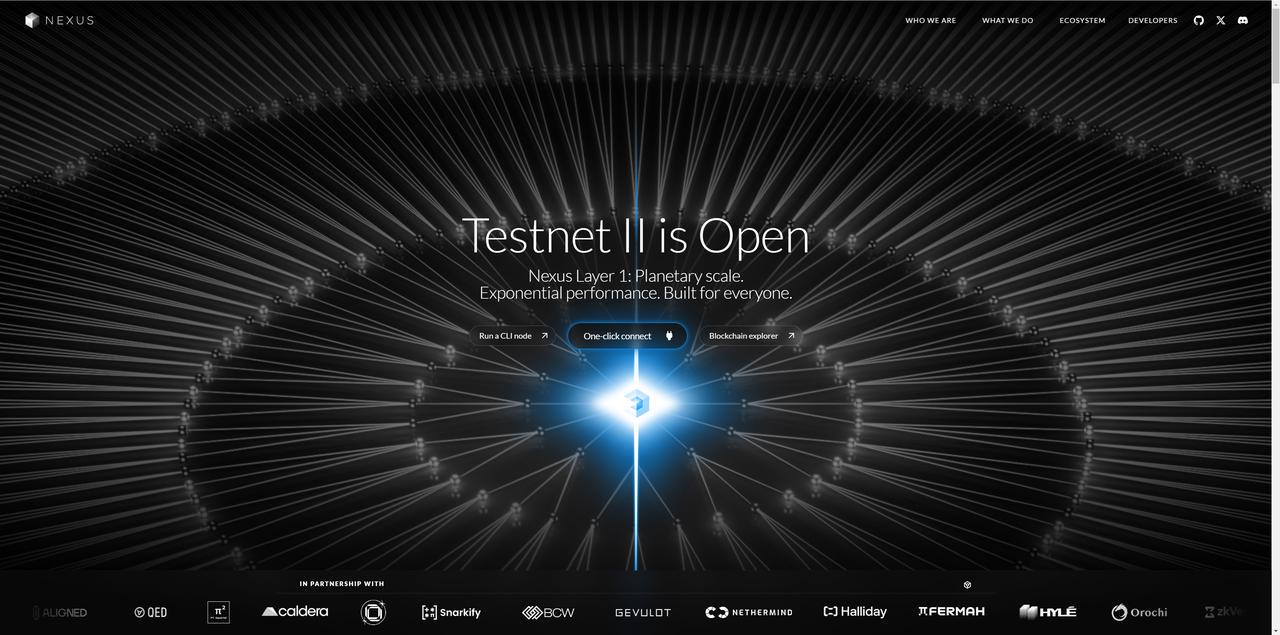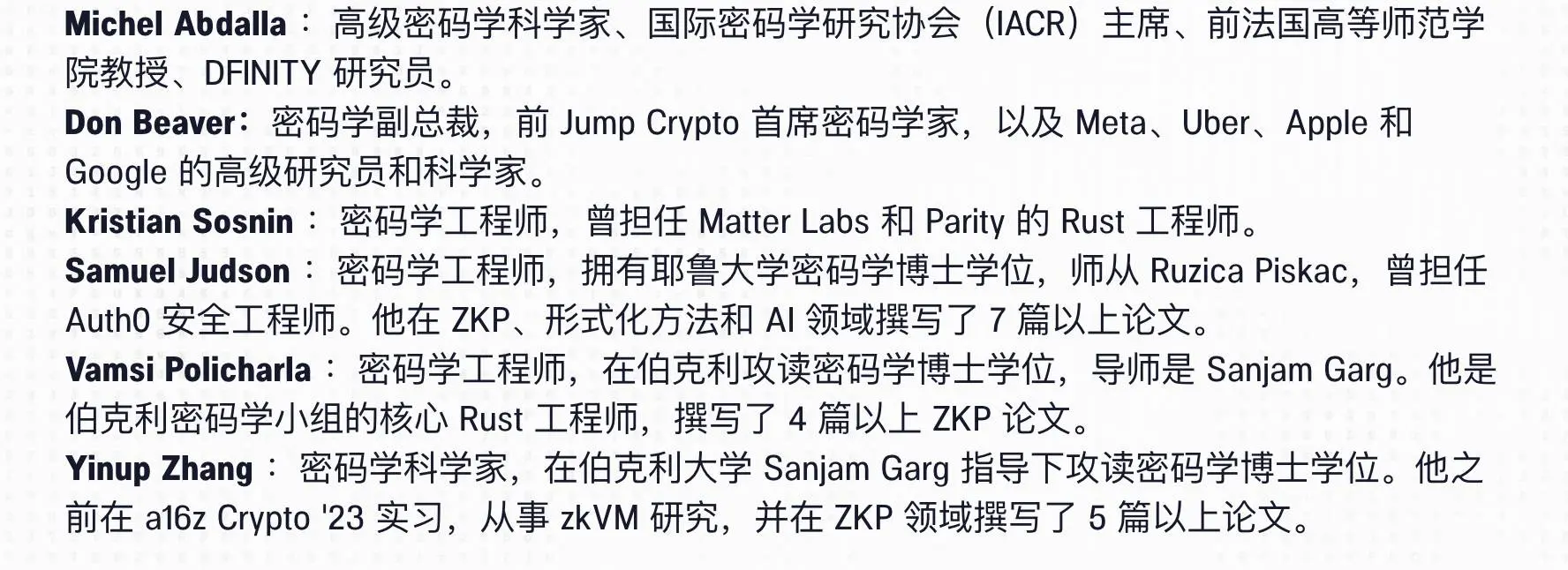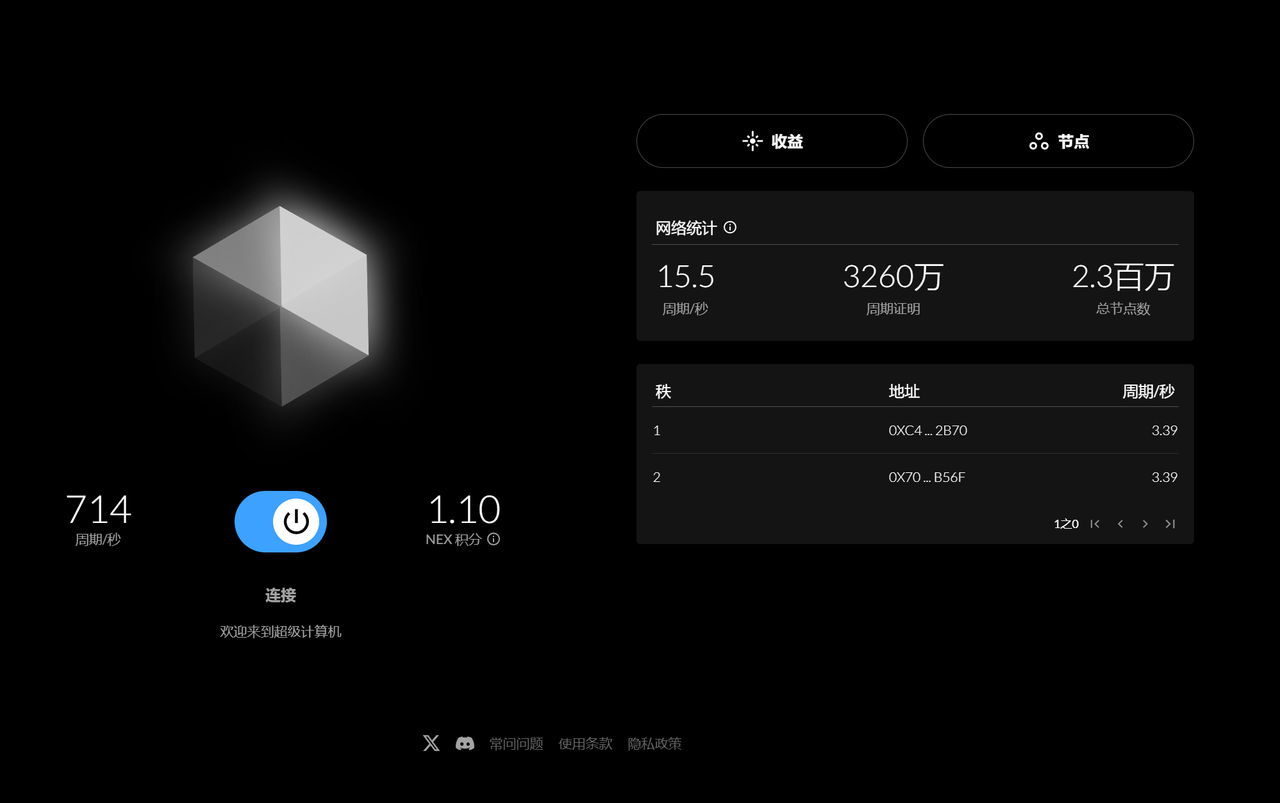Number: Chain Source Technology PandaLY Hotspot Insights Broadcast No.012
Nexus is an innovative project centered on high-performance blockchain technology, featuring a "web-based CPU mining" (i.e., "CPU head mining") model aimed at lowering the barriers to entry for mining, attracting ordinary users to contribute computing power directly through their browsers. At the same time, it integrates decentralized finance (DeFi) and distributed artificial intelligence (AI) ecosystems. The ultimate goal of Nexus is to compress all verifiable computations into a single proof, merging millions of chains and applications to create a unified world computer.
Core advantages include:
High concurrent processing capability: The Nexus public chain claims to handle over 3,000 transactions per second, far exceeding Ethereum's throughput, meeting large-scale commercial demands.
Integration of Web3.0 and mining: Through the web mining model, users can participate without specialized equipment, greatly expanding the user base. It is similar to Grass (distributed computing network) but emphasizes lower barriers and immediate rewards.
Optimization of decentralized finance: Built-in features like oracles and native swaps specifically optimize DeFi scenarios, aiming to replace traditional centralized financial infrastructure.

Project Vision and Technical Highlights
Project Vision: NEXUS is committed to "connecting the decentralized world," building a global pool of computing resources, integrating global computing resources, achieving cross-chain interoperability, and providing developers with an efficient serverless platform similar to traditional cloud computing (like AWS Lambda).
Technical Highlights: The project is based on Nexus zkVM technology, combining on-chain and off-chain computing methods, aiming to lower development barriers while ensuring system security and data immutability. It employs cutting-edge technologies such as zero-knowledge proofs, off-chain computing, and multi-party computation to ensure low cost, high security, and high scalability.
Development Status: The project recently announced the launch of a brand new Layer 1 blockchain and is gradually opening the testnet (such as Nexus Testnet II), with detailed architecture and roadmap to be announced in the coming weeks. Additionally, the team will launch Nexus Testnet II on February 18, 2025, which will remain open until February 21, 2025. The goal of Testnet II is to prepare for the integration of the Nexus Layer 1 blockchain.
Nexus Background: A "Production, Learning, and Research" Combination Led by Academic Elites + Top Capital Support
Key Team Members:
CEO Daniel Marin: A recent Stanford graduate, international physics Olympiad medalist, active developer on GitHub, with a solid technical background.
Advisor Dan Boneh: A Stanford cryptography professor and member of the National Academy of Engineering, providing academic authority endorsement for the project.
Executive Team: Other core members of Nexus are also composed of a highly specialized cryptography team with extensive experience in the Web3 industry, having worked with organizations such as Difinity, Jump Crypto, Matter Labs, and a16z training camp.

Funding Scale:
The Nexus project has attracted significant capital in its early stages. According to public information, the project completed approximately $2.2 million in seed round financing and raised about $25 million in the A round, bringing the total funding amount to approximately $27.2 million.
Top-tier Capital Endorsement:
Investors include well-known institutions such as Pantera Capital, Lightspeed Venture Capital, Dragonfly Capital, Alliance DAO, Faction, SV Angel, and Blockchain Builders Fund, indicating a high level of recognition from the capital market for the project's technology and business model.
Nexus Airdrop and Participation Process
Currently, the Nexus Network is in the initial beta testing phase, and users can participate in mining through the official website (https://beta.nexus.xyz/). Participation methods include using a web application or command line interface to connect to the Nexus Network. It is important to note that there is no need to bind a wallet at this stage, and it is not yet clear whether there are rewards, as it is in a blind mining phase. Therefore, users are advised not to clear their browser cache during participation to prevent loss of points.
For users interested in participating in mining, it is recommended to follow these steps:
Step 1: Visit the Nexus official website
Step 2: Click the "Connect" button to connect and start mining.
Step 3: Keep the page open, avoiding refresh or closure, to continue mining.

Please note that mining speed is related to computer configuration; more powerful devices will achieve higher mining efficiency and rewards. Additionally, ensure a stable network connection to avoid interruptions or lag that could affect mining efficiency.
For more information and the latest updates, you can follow Nexus's official Twitter account or visit its official website.
*PandaLY Safety Reminder: Be sure to participate through official channels and be cautious of phishing links.
Next Grass? Competitive Analysis
Project Advantage Comparison:
Dimension
Nexus
Grass
Traditional Financial Public Chains (e.g., Solana, Ethereum)
User Threshold
Web-based direct mining, zero hardware cost
Requires client installation, dependent on network bandwidth
Requires staking, running nodes, higher threshold
Mining Model
No-device mining (web-based), combined with zkVM
Distributed GPU/CPU computing power sharing
Relies on PoS or PoW
Technical Positioning
Financial public chain + AI integration
Distributed computing power network
Ethereum focuses on smart contracts, Solana focuses on high-performance DeFi
Ecosystem Expansion
Built-in DeFi tools, developer-friendly
Focus on computing power resource sharing
Tends towards financial ecosystems, strong versatility
Security
zkVM + decentralized storage + smart contracts
Focuses on the security of computing power scheduling
Relies on L1 or L2 solutions
Nexus lowers the participation threshold through its web mining model. Compared to the high requirements of Grass and Solana, ordinary users can contribute computing power and receive incentives without specialized hardware.
The technical positioning leans more towards the integration of finance and computing, while Grass focuses more on decentralized computing power trading, and Solana/Ethereum centers on financial ecosystems.
The ecosystem's scalability is strong, optimizing smart contract execution through zkVM technology, compatible with AI computing and DeFi applications, forming a more comprehensive Web3 computing infrastructure.
Market recognition: Grass has accumulated a stable user base, while Nexus needs to quickly break through the market with its differentiated mining model.
Nexus Security Analysis:
Nexus web mining builds a mining network that combines technical depth and user-friendliness through the efficient integration of zero-knowledge proofs, decentralized parallel computing, and low-threshold user experience. However, it is currently only in the testing phase, and the project's core technology and security have not been extensively validated in the market. Additionally, web mining has higher technical security requirements.
Especially in the Web3 field, security is always one of the key factors determining a project's survival, particularly for decentralized computing networks like Nexus, which involve multiple aspects such as smart contracts, mining security, and user privacy. Issues such as reliance on centralized script deployment and some code not being fully open-sourced still require ongoing attention.
Potential Risks:
Code security and vulnerabilities: If there are vulnerabilities or backdoors in the web mining code, it could be exploited by hackers for malicious operations; at the same time, the project's node software may also face vulnerability risks.
Data privacy issues: Users may need to provide information such as email during the mining process, necessitating the assurance of data transmission and storage security.
Phishing and imitation risks: Due to the high market interest in mining projects, there may be imitation websites or phishing attacks, making it easy for users to fall victim.
Resource abuse and performance impact: Long-term idle on the browser may cause user devices to overheat and increase power consumption, and if malicious code is implanted, it could evolve into "cryptojacking" (hijacking computing resources) attacks.
Security Recommendations and Protective Measures:
Code auditing and vulnerability scanning: It is recommended to conduct a comprehensive security audit of the Nexus mining frontend code and node deployment software to promptly identify and fix security vulnerabilities.
Data encryption and transmission security: Ensure that user data uses encrypted protocols such as HTTPS during transmission to prevent man-in-the-middle attacks.
User education and risk warnings: Clearly disclose the risks of the testing phase to users, suggesting they use independent devices or virtual machines for trials to prevent resource abuse issues caused by malware.
Multi-layered protection architecture: For node deployment, it is recommended to use security measures such as firewalls and intrusion detection systems (IDS) to protect servers from external attacks.
Conclusion
In the blockchain industry, technological innovation and ecosystem prosperity often come with security challenges. As an emerging Layer 1 blockchain, Nexus must address a series of security issues, including decentralized mining, smart contract vulnerabilities, governance security, and economic model stability, while promoting the integration of global computing resources. Security is not just a technical issue; it is the lifeline for the long-term development of the Nexus ecosystem.
Security is not a one-time task but a continuous process of optimization and iteration. For Nexus to become a new generation of high-performance public chains, it must prioritize security and continuously strengthen its defensive capabilities to truly become a pillar of the global decentralized computing network.
免责声明:本文章仅代表作者个人观点,不代表本平台的立场和观点。本文章仅供信息分享,不构成对任何人的任何投资建议。用户与作者之间的任何争议,与本平台无关。如网页中刊载的文章或图片涉及侵权,请提供相关的权利证明和身份证明发送邮件到support@aicoin.com,本平台相关工作人员将会进行核查。




